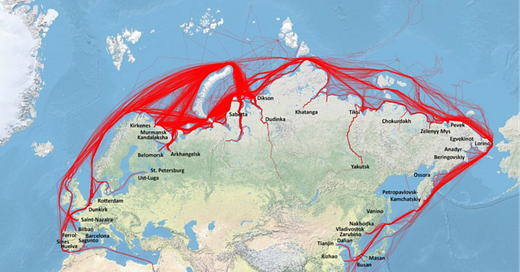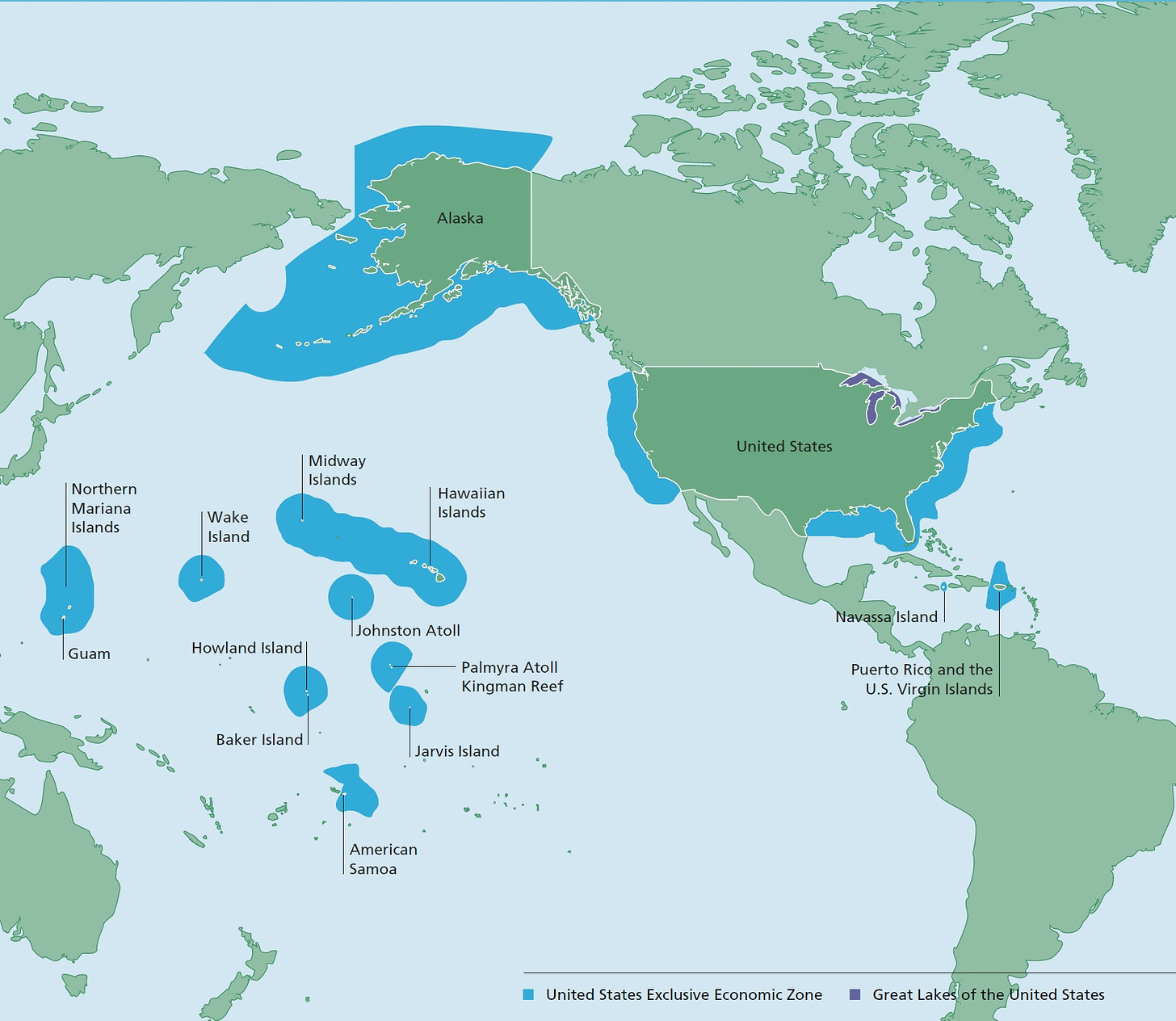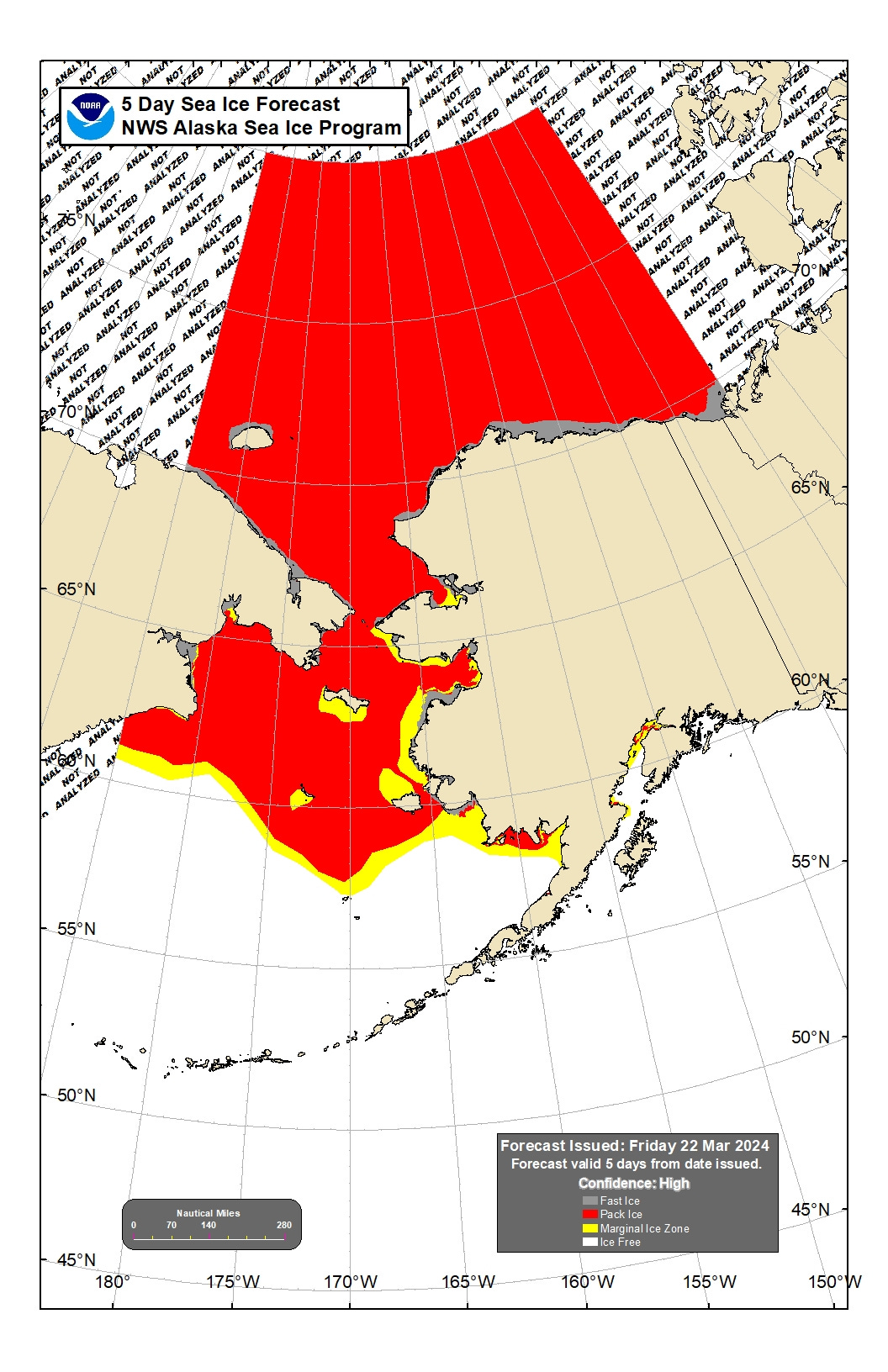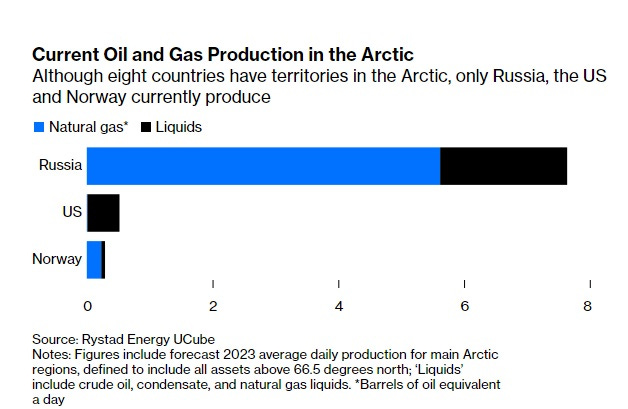Admiral Caudle on the Importance of Arctic Presence
This is why the Department of Defense needs "Assured access to ice impacted waters."

Earlier in March, we saw that the U.S. Coast Guard cannot sustain Arctic presence and ensure U.S. Navy access to the polar regions with just the Polar Star and the Healy, its two polar icebreakers. Today, by looking at a recent speech by Admiral Caudle, we will consider the importance of Arctic presence and assured Arctic access in today’s environment.
Admiral Daryle Caudle, Commander of U.S. Fleet Forces Command, gave a speech at the American Society for Naval Engineers on March 6th. In this position, he is also the Joint Forces Maritime Component Commander (JFMCC) for NORTHCOM, responsible for the maritime defense of the U.S. homeland. The speech isn’t that long and is worth a full read. You can find it here. Today, we’ll look particularly at his assessment of the security situation within the Arctic, saving an analysis of his lines of effort for another day.
Here is Admiral Caudle, setting the stage:
The melting away of Arctic Sea ice has led to increased human activities in the Arctic, and has heightened interest in, and raised concerns about the region’s future across many dimensions. The United States, by virtue of Alaska, is an Arctic country and has substantial interests in the region.
Human activity in the Arctic region has increased markedly in the past decade or so, albeit from a low base. The amount of cargo traveling along the Northern Sea Route (NSR), which runs along Russia’s Arctic coast, has risen more than tenfold since 2011. It’s still a far cry from the amount that transits through the Suez (roughly 1 trillion tons per year), but Russia continues to invest in expanding the NSR by building icebreakers, improving high latitude communication, and investment in infrastructure. In 2024, the NSR will operate year-round for the first time. Russia estimates that cargo moved in the NSR could more than double in 2024- up to as much as 80 million tons- and reach 400 million tons within a decade.
This chart shows the total cargo volume transited within/through the NSR from 2011 through 2022. 2022 broke the upward trend with a small decrease as sanctions began to bite following the Ukraine invasion, but according to late data (not included in the below chart) shipping along the route surpassed 35 million tons in 2023, hitting a new record.
Here you can see the 2022 traffic flow through the NSR, which can offer a significant reduction of the transport distance from Europe to Asia. Much of this traffic is moving natural gas from the Yamal peninsula. There is a significant and increasing number of vessels passing near Alaska and the Exclusive Economic Zone (EEZ) of the USA as they transit the Bering Strait.
According to Article 56 of the United Nations Convention on the Law of the Sea1, in its EEZ the coastal state has “sovereign rights for the purpose of exploring and exploiting, conserving and managing the natural resources, whether living or non-living, of the waters superjacent to the seabed and of the seabed and its subsoil, and with regard to other activities for the economic exploitation and exploration of the zone, such as the production of energy from the water, currents and winds.” The EEZ extends up to 200 nautical miles (nm) from the coastal baseline. Further, according to Article 77, if the coastal state claims an extended continental shelf, it “exercises over the continental shelf sovereign rights for the purpose of exploring it and exploiting its natural resources.” That means oil, gas, and minerals.
The EEZ of the United States is the largest in the world, spanning over 13,000 miles of coastline and containing 3.4 million square nautical miles of ocean—larger than the combined land area of all fifty states. And most of the EEZ is off of the Coast of Alaska. The Alaskan EEZ is larger- by more than 400,000 square miles- than the EEZ from all the continental states. All of the traffic heading to and from Asia along the NSR passes through the Bering Strait and in close proximity to the Alaskan EEZ.
And our Alaskan EEZ can be icy:
Back to Admiral Caudle’s speech:
Russia is attempting a ‘first to market’ approach in the Arctic. To corner this market, Russia’s government considers certain parts of the Northern Sea Route to be internal Russian waters and has asserted a right to regulate commercial shipping passing through these waters – a position that creates a source of tension with the U-S government, with allies and partners, even with China, who all consider those transit routes to be international waters.
Russia has established rules and permitting requirements for transit through the NSR based on UNCLOS Article 234, for Ice-covered areas: “Coastal States have the right to adopt and enforce non-discriminatory laws and regulations for the prevention, reduction and control of marine pollution from vessels in ice-covered areas within the limits of the exclusive economic zone, where particularly severe climatic conditions and the presence of ice covering such areas for most of the year create obstructions or exceptional hazards to navigation, and pollution of the marine environment could cause major harm to or irreversible disturbance of the ecological balance. Such laws and regulations shall have due regard to navigation and the protection and preservation of the marine environment based on the best available scientific evidence.” Article 236 then exempts sovereign vessels, such as warships, from those regulations when it is operating in government non-commercial service.
However, Russia considers several of the straits along the NSR to be internal waters- meaning that there is no right of innocent passage. Following passage through these straits by a French Naval Auxiliary in 2018, Russia used this interpretation to impose restrictive rules on foreign warships: “a foreign state must send a notification about a voyage at least 45 days ahead of its start, and include the name of the ship, its objective, route and period of sailing, as well as ship characteristics such as length, width, deadweight, draft and type of engine power and the name of the ship’s captain. Ships will be required to have on board a Russian maritime pilot.”
Russia’s rules for sovereign vessels remain unchallenged. In 2019, the U.S. Navy considered a Freedom of Navigation Operation (FONOP) to do so, but the operation never happened. Perhaps the reason was the risk without dedicated and reliable icebreaking services.
Admiral Caudle again:
Russia’s fielding of advanced, long-range cruise missiles capable of being launched from Russian territory and flying through the northern approaches and seeking to strike targets in the United States and Canada have emerged as a significant military threat in the Arctic.
In the Fall of 2022, Russia added its first SEVERODVINSK-class conventional and nuclear capable cruise missile submarine to the Pacific Fleet, which poses a new challenge to our defense of the western approaches to North America to include the Aleutians. Simply said, we cannot sit idly by and allow Russia to establish their “9-dashed line” around the North Pole.
The “9-dashed line” refers to excessive Chinese maritime claims in the South China Sea based on 9-dashed line that appears on some old Chinese nautical charts. By mentioning this here, Admiral Caudle is apparently calling Russia’s claimed internal waters along the NSR as well as its additional continental shelf claims made under UNCLOS "excessive”.
So what does this “excessive” continental shelf claim look like? This Arctic chart is busy, but if you look to the North Pole area you can see Russia’s claim and that this claim overlaps with those of Canada, Norway, and Denmark. As mentioned early, extended continental shelf claims give the coastal nation access to the seabed, including oil, natural gas, and rare earth elements.

The U.N is considering these claims, and Russia has- to this point- been following the proper procedure for adjudication. However, the Russian Government recently suggested that it is considering leaving UNCLOS:
We will not continue to be part of it to our detriment. As Vladimir Putin says, we are no longer going to believe in their words. If you look at the Arctic from above, 64% of it, based on the circumference, belongs to Russia. We secured it all and we are obliged to protect everything that our ancestors handed to us.
- Chairman of the Russian Parliament Committee for the Development of the Far East and Arctic Nikolai Kharitonov
Unconstrained by UNCLOS, Russia would be in a position to simply “take” the resources, backed up by its revitalized Arctic military presence.
Russia’s military build-up along the NSR is not new; it has been rebuilding and modernizing its Soviet-era bases along the NSR since Vladimir Putin re-established the Arctic as a priority in 2007, as documented by CSIS and others. As part of this, the Northern Fleet Joint Strategic Command, sometimes referred to as Russia’s Arctic Command, was established as Russia’s fifth independent military district in 2014.
Much of this build-up is considered to be defensive in nature. Its proximity to Russia’s extended claims along the NSR and near the North Pole, however, create an area of Russian control which continues to go unchallenged.
Admiral Caudle on China:
China has their own aspirations. China is not content to remain a mere observer in the growing competition, declaring itself a “near-Arctic state,” and has taken action to normalize its naval and commercial presence in the region to increase its access to lucrative resources and shipping routes.”
The P-R-C refers to the new trans-Arctic shipping routes as the Polar Silk Road, and identifies these routes as a third major transportation corridor for the Belt and Road Initiative. China is heavily investing in polar icebreakers, completing construction on its third in December 2023 with many more planned2. For reference, the United States has two and they have been in service since 1976.
So in quick summary, Russia and the P-R-C’s joint exercises have unquestionably increased, their joint operations have increased, their interest and investments capabilities pertaining into the Arctic have increased, and to be frank their rhetoric has increased. I only see their partnership growing closer, and that should be concerning for us all.
I’m glad to see Admiral Caudle including China. China funds much of Russia’s natural gas development and stands to benefit greatly from Russia’s Arctic capabilities because of their ever-closer ties. Access to a defended NSR is a strategic asset, allowing both Russia and China to move goods, military supplies, and warships quickly and easily between Europe and Asia.
Today, as most people in this room know, 90% of all trade travels across the world’s oceans – with seaborne trade expected to double over the next 15 years. The Arctic may be the world’s smallest ocean, but the Arctic basin is full of growing global economic and geopolitical importance, spurring more activity than ever before. The Arctic region is estimated to hold 30% of world’s undiscovered natural gas reserves, 13% of global conventional oil reserves, and ~$1T worth of rare earth minerals.
These numbers are not new. It is worth pointing out just how far ahead Russia is in terms of using its Arctic resources:
This is not because the USA lacks oil, gas, and minerals within its EEZ; rather, most of these waters are off limits for production or mineral exploration due to U.S. government policy. According to the U.S. Geological Survey, as cited in Bloomberg, “Russia dominates Arctic energy resources overall, but Alaska is second to none when it comes to crude oil.”
These same policies are part of the reason that there is no longer a commercial icebreaking fleet, but that is a story for a different time.
Concluding Thoughts:
There’s a lot going on the Arctic today that directly affects the interests of the United States of America. The USA probably should be able to monitor what’s going on in its EEZ and near abroad, 24/7/365. But to do that, investment in additional capabilities is needed- including icebreakers. Fortunately, there is a cost-effective- if politically challenging- way to get them. More on that coming soon.
Thanks for reading, subscribing, and spreading the word.
Like by pressing the heart if you want to see more posts like this and consider sharing with a friend.
All the Best,
PGR
Although the U.S. Senate has not ratified UNCLOS, the U.S. government abides by it and recognizes it as customary international law.
Admiral Caudle seems to be overstating China’s capabilities. China currently operates three Polar Research Vessels- the Xue Long, (a converted Ukrainian cargo ship), the Xue Long 2 (a polar research vessel not technically classified as an icebreaker) and the Zhong Shan Da Xue Ji Di, (a converted anchor handling tug supply vessel built in 1983). While they are capable of independent operations in relatively easy ice conditions, none of them are true polar icebreakers.








